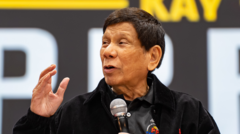By Upamanyu Basu & Neeraj Singh Manhas
Can the elephant lead?
India’s claim of leadership of the Global South comes strongly after the successful culmination of its G20 presidency with the New Delhi declaration. This success is proof that India’s diplomatic clout can be a successful bridge between the West and Russia amidst the Ukraine crisis. This was followed by India’s position in another multilateral forum, BRICS, increasing its strategic role in the ‘rise of the rest’ thesis. A non-Western group of countries pushing for reforms of the Bretton Woods system provided an opportune stage for India and other developing countries to highlight the issue of inequitable global financial governance.
India played a significant role in the establishment of the New Development Bank in 2014 (Kumar, Citation2024). While groupings such as BRICS are intended to enhance economic cooperation and strategic relations among member nations, the group’s functioning capacity has been significantly affected by the worsening of India–China relations, especially after the Galwan incident of 2020. The unresolved border dispute and escalating geo-strategic rivalry in the Indo-Pacific region remain central issues between the two countries.
As Kishore Madhubani, a former Singaporean diplomat, has argued, there is a structural shift happening in the global order. The power of the West is declining, and the weight and the power of the Global South – the world outside the West – is increasing. Only one country can be a bridge between the West and the rest, and that’s India (Cave et al., Citation2023). While India is far from being a great power, its growing economy offers a possible significant advantage for Western allies to counter China. Prime Minister Narendra Modi’s warm interaction with African Union chairman Azali Assoumani at the G20 Summit in 2023 gave a reminder of India’s version of influence. From ‘vaccine diplomacy’ to bringing together 100 developing and underdeveloped nations under the banner of the Voice of Global South Summit in 2024, India demonstrates a unique ability to be a bridge between nations.
Can the dragon lead?
China aspires to lead the Global South on the back of its leading economic power and strategic investments in this bloc. By funding infrastructure projects globally – including over 140 countries, mainly in Africa, Asia and Latin America, with initiatives such as the ‘Belt and Road Initiative’ – China has exploited its financial platform to build vast economic frameworks of dependency (Woetzel et al., Citation2017). China’s newfound partners in the Global South have turned towards Beijing partly because of its capacity to deliver ‘no-strings-attached’ loans and investments. At the same time, Western financial institutions impose many conditions on recipients.
Moreover, the growing willingness of China to voice its position on reforms of the existing mechanisms of global economic governance – advocating for de-dollarisation and alternatives to the Bretton Woods system – also finds echoes among the countries striving for a more equitable world order. But there are downsides to this. Observers say China’s policies – from ‘debt-trap diplomacy’ to land grabs – have lured countries into debt and triggered geopolitical levers (Berkofsky & Sciorati, Citation2020). Beijing’s overtly central role, moreover, within BRICS and other platforms has made all the bloc’s member nations cautious about what they perceive as Beijing’s hegemonic ambitions in the Indo-Pacific region and beyond, complicating attempts to push for unified action inside the bloc.
Research Article – India’s place in America’s world under the Biden presidency: Decoding the China factor
India–China relations – the present, the challenges and the future
Competing interests within the global south
While both India and China seek to advocate on behalf of the Global South, their approaches differ notably, shaped by each government’s geopolitical ambitions and strategic concerns. India portrays itself as a ‘bridge between the global North and South’, emphasising multilateral cooperation and inclusive development. Its focus on sustainable progress, capacity building and reforming international bodies appeals to those wary of excessive reliance on individual heavyweights (He & Feng, Citation2025).
However, China’s strategy centres on leveraging economic strength to forge a ‘developmental model’ circumventing traditional Western frameworks, as manifested in initiatives such as the vast ‘Belt and Road Initiative’.
Upamanyu Basu is a Assistant Professor of Political Science, Department of Social and Political Studies, Manav Rachna International Institute of Research and Studies, New Delhi, India and Neeraj Singh Manhas is a Special Advisor for South Asia, Parley Policy Initiative, Pyeongtaek, Republic of Korea.
The post Who can lead the Global South? Navigating the elephant and dragon’s rise appeared first on Caribbean News Global.
